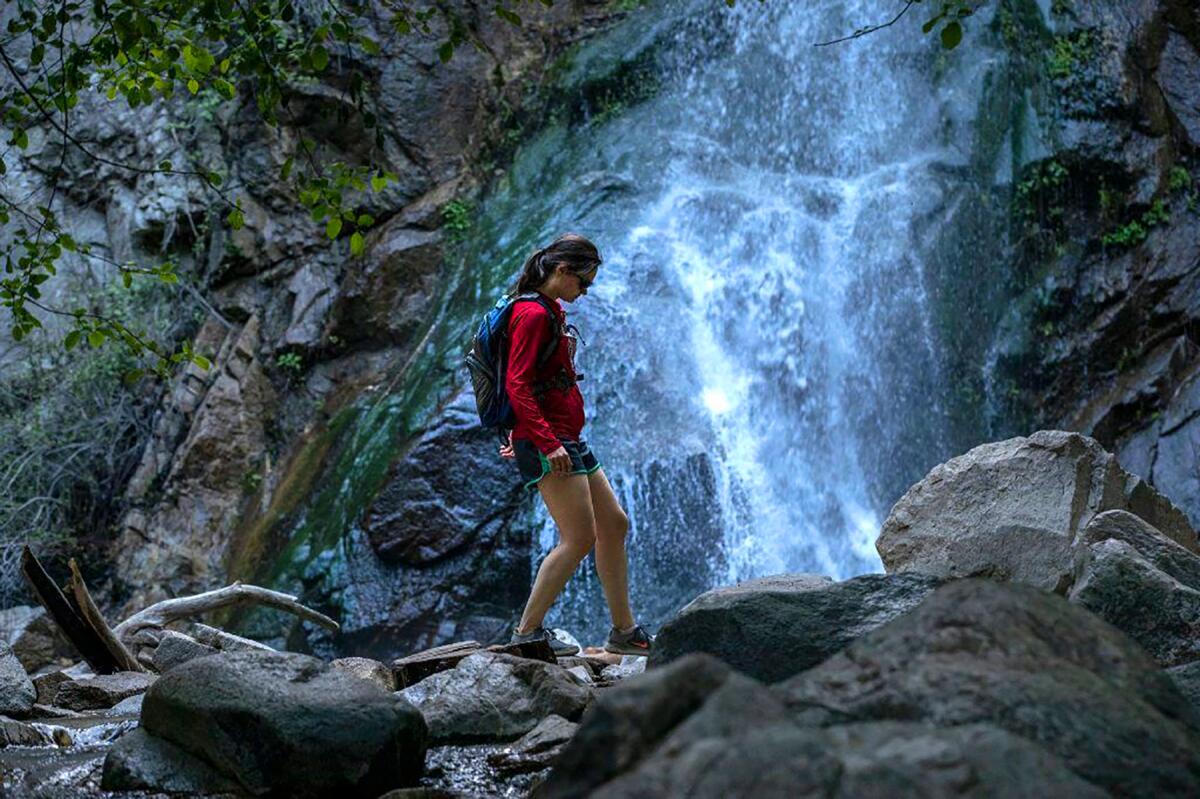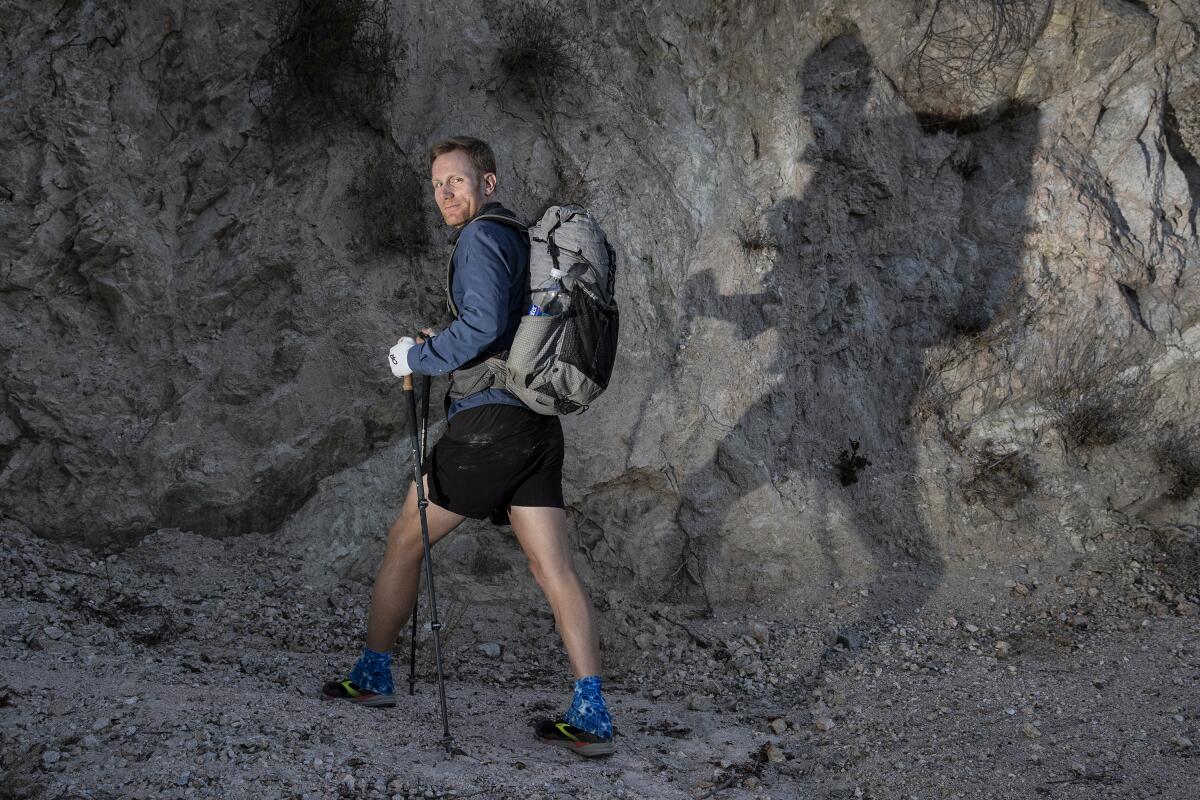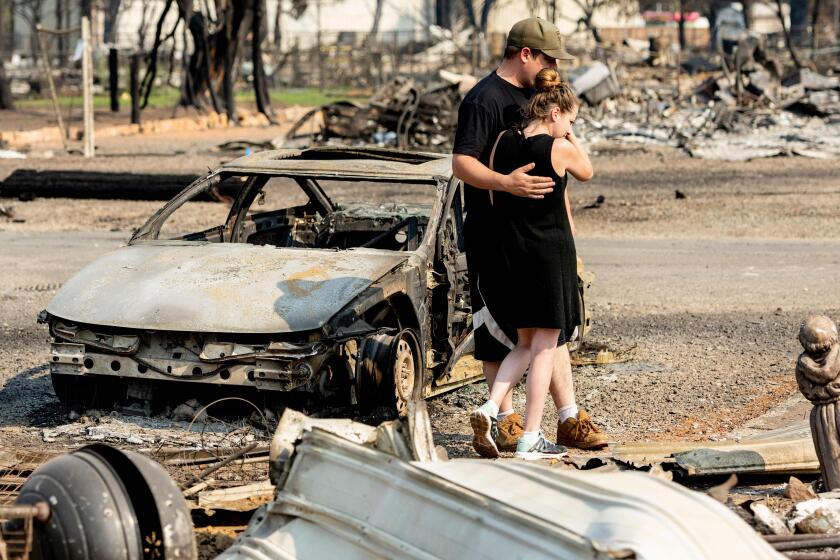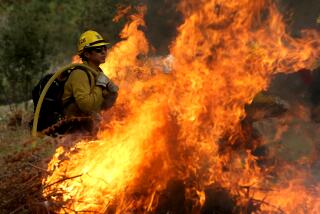Hikers shut out as climate change, fires kept California forests off-limits

R.J. Soria was packing food to take on the 195-mile Sierra High Route late last month when the news came.
California’s 18 national forests were shutting down as wildfires rampaged across the northern part of the state.
The same thing happened to him a year ago, as he neared the end of a meticulous planning process for a long trek where an error could be life-threatening.
“It’s kind of a nightmare where you have this goal, and it’s an awesome adventure of a lifetime. And then it just disappears, literally, up in flames,” said Soria, 33, a graphic designer and business owner from Mira Loma, Calif.
The scuttled sojourn stung, but Soria said he understood the closures.
“People are losing their homes, and you’re going to complain that you can’t go walk outside?” he said.
In addition to the Sierra High Route, which runs through some national forest land, the Pacific Crest Trail’s California stretch was interrupted for weeks.
Hiking the entire Mexico-to-Canada length can take four to five months, and some opt to quit their jobs or sublet their apartments to do it.
Those who trekked the more common northbound route this year largely avoided the closures, but virtually all the roughly 600 to 700 hikers headed southbound “would have been significantly affected,” with many canceling their trips, said Justin Kooyman, associate director of trail operations for the Pacific Crest Trail Assn.
It’s not just hardcore backpackers like Soria who have missed out because of the ferocity of this year’s fires and the resulting forest closures, which began just ahead of Labor Day weekend.
Many Californians who enjoy day hiking, camping or biking in the wilderness were barred from trails that are a sanctuary from urban life.
Even with most forests in the northern part of the state now open and Southern California forests reopening late Wednesday, many worry that this could become the new normal if wildfires continue their high-intensity trend, fueled at least in part by climate change. Some said they were hesitant to plan their next big adventure or were looking to embark at different times of the year.
This was only the second national forest closure of this magnitude in California. The first was last year during what would become the state’s worst wildfire season on record, with 4 million acres burned. Fire officials and climate experts fear that this season — with 2.3 million acres already charred — could outpace last year’s staggering destruction.
“We have to remain realistic about what the future holds,” said Samantha Reho, spokesperson for the U.S. Forest Service Pacific Southwest region. “Obviously, we want to remain positive. We want to keep public lands open year-round as much as anybody else, but there will be times where we’re going to have to call on the people to do the right thing.”
Southern California has so far been spared the worst wildfires this season. Officials closed the 700,000-acre Angeles National Forest and three other forests in the region partly because firefighters were overtaxed by blazes elsewhere.
With so many local firefighters up north fighting monsters like the Dixie and Caldor fires, a spark in the Angeles could quickly get out of hand. Critically dry fuels and hot seasonal winds are exacerbating anxieties.
“On the Angeles [National Forest], 85%, if not 90%, of our fires are human-caused,” said Andrew Mitchell, a public information officer for the forest. “It shows that if we … restrict public access for a period, it might prevent a large fire.”
Hannah Briggs lives in Altadena, about 400 meters from a trailhead leading into the Angeles. Recently, she went for a run into the forest, knowing it was off-limits.
She felt guilty, noting: “At the end of the day, I’m kind of a Girl Scout.”
The 37-year-old software engineer abided by the forest closures last year forced by COVID-19 and the Bobcat fire. She continued to do so this year after the shutdown began.
But when officials announced an extension of closures for the Angeles and other southern forests earlier this month, Briggs hit her breaking point.
Meanwhile, northern forests were reopening even as major fires, including the KNP Complex and Windy fires, ignited and exploded, threatening treasured giant sequoias.
For Briggs, running and biking away from the chaos of the city are a “completely mindful experience.” On hikes, her 4-year-old son, Aurick, watches squirrels frolic and listens to birds sing.
The trails were once a deciding factor in keeping her and husband Ryan in California. Without access to them, the choice is more complicated.
“If they think this is a good way to manage the forest, what a bummer,” Briggs said. “It really changes the complexion of living here.”
Hollywood resident Storm Robinson, an avid trail runner, said he sympathizes with firefighters but wishes there was a better solution than blanket closures.
He said it is disconcerting to hear officials say there aren’t enough resources if a fire breaks out.
“Everybody should be kind of annoyed because we pay for that — we pay for these services,” said Robinson, 33.
“We’re right smack in the middle of wildfire peak season,” Cal Fire Chief Thom Porter said. The outlook for the rest of the year includes more heat and dryness.
For Cameron Hummels, a computational astrophysicist and ultra runner in Pasadena, adaptation is key. He is not happy about the new normal, but he will time his trips differently.
With late-season fire and smoke potentially here to stay, “You just have to deal with it and go earlier in the season to avoid concerns about that — mosquitoes be damned,” he said. “Regardless of if you believe that it’s due to climate change or due to poor management of the forest, this is the situation.”

Erin Greeson of Pasadena is a regular on the Mount Wilson trail. The time outdoors is vital for “all aspects of wellness,” she said.
Because of how much she values the forest, she wants to do everything to protect it — including respecting the closure orders.
She doesn’t mind staying off the trails, especially when she recalls the battle that firefighters waged last year to save the historic Mount Wilson Observatory from the Bobcat fire.
Greeson, 44, wants to go to Yosemite next month, but the uncertainty is making her hesitate.
“Will I have to cancel at the last minute?” she said. “What if I get up there and then fire breaks out?”
More to Read
Sign up for Essential California
The most important California stories and recommendations in your inbox every morning.
You may occasionally receive promotional content from the Los Angeles Times.












